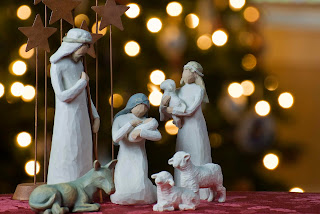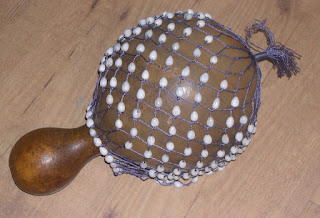Makar Sankranti is
celebrated across the country in different ways and the cultural significance
of the festival varies geographically as we move from one state to another,
with every state celebrating and welcoming the new season of harvest in their
own indigenous manner.
Makar Sankranti is
celebrated across the country in different ways and the cultural significance
of the festival varies geographically as we move from one state to another,
with every state celebrating and welcoming the new season of harvest in their
own indigenous manner.
What makes the
festival stand apart from the other Indian Hindu Festivals is the fact that the
date of Makar Sankranti is fixed. Makar means Capricorn and Sankranti is
transition.
There is a sankranti
every month when the sun passes from one sign of the zodiac to the next. The
popular Indian festival “Makar Sankranti” is the first Indian festival falls in
New Year.
It is one of the major
Indian harvest festival celebrated on 14th of January of every year. It’s an
important festival of the Hindus and celebrated almost everywhere in the
country in myriad cultural forms and different names. Every region celebrate it
in innumerable ways, according to the localization, culture and traditions.
Delhi and Haryana
Delhi and Haryana and
many neighbouring states consider Sakraat or Sankranti to be a main festival of
the year.
Churma of ghee, halwa
and kheer are cooked specially on this day. One brother of every married woman
visits her home with a gift of some warm clothing for her and her husband's
family. It is called "Sidha". Women used to give a gift to their
in-laws, and this rituals called "Manana". The recipient will sit in
a haweli (main palace where men sit together and share hookka). Women go to
haweli to sing folk songs and give gifts.
Punjab
In Punjab, Makar Sankranti is celebrated as Maghi. Bathing in a river in the
early hours on Maghi is important. Hindus light lamps with sesame oil as this
is supposed to give prosperity and drive away all sins. A major mela is held at
Sri Muktsar Sahib on Maghi which commemorates a historical event in Sikh
history.
Culturally, people
dance their famous "bhangra". They then sit down and eat the
sumptuous food that is specially prepared for the occasion. It is traditional
to eat "kheer", rice cooked in milk and sugarcane juice. It is also
traditional to consume khichdi and jaggery. December and January are the
coldest months of the year in the Punjab. Maghi represents the change of the
season to warmer temperatures and increase in daylight.
Rajasthan and West Madhya Pradesh
"Makar
Sankrati" or "Sankrat" in the Rajasthani language is one of the
major festivals in the state of Rajasthan. The day is celebrated with special
Rajasthani delicacies and sweets such as pheeni (either with sweet milk or
sugar syrup dipped), til-paati, gajak, kheer, ghevar, pakodi, puwa, and
til-laddoo.
Specially, the women
of this region observe a ritual in which they give any type of object (related
to household, make-up or food) to 13 married women. The first Sankranti
experienced by a married woman is of significance as she is invited by her
parents and brothers to their houses with her husband for a big feast. People
invite friends and relatives (specially their sisters and daughters) to their
home for special festival meals (called as "Sankrant Bhoj"). People
give out many kind of small gifts such as til-gud (jaggery), fruits, dry
khichadi, etc. to Brahmins or the needy ones.
Kite flying is
traditionally observed as a part of this festival.On this occasion the sky in
Jaipur and Hadoti regions is filled with kites, and youngsters engage in
contests trying to cut each other's strings
Tamil Nadu
Main article: Thai
Pongal
It is a four-day festival in Tamil Nadu:
Day 1 marks Bhogi Pandigai, Day 2 is Thai Pongal, Day 3 Maattu Pongal and Kaanum
Pongal is celebrated on day 4.
The festival is
celebrated four days from the last day of the Tamil month Maargazhi to the
third day of the Tamil month Thai.
Assam
Magh Bihu also called
Bhogali Bihu is a harvest festival celebrated in Assam, India, which marks the
end of harvesting season in the month of Maagha (January–February).It is the
Assam celebration of Sankranthi, with feasting lasting for a week.
The festival is marked
by feasts and bonfires. Young people erect makeshift huts, known as meji, from
bamboo, leaves and thatch, in which they eat the food prepared for the feast,
and then burn the huts the next morning.The celebrations also feature
traditional Assamese games such as tekeli bhonga (pot-breaking) and buffalo
fighting. Magh Bihu celebrations start on the last day of the previous month,
the month of "Pooh", usually the 29th of Pooh and usually the 14th of
January, and is the only day of Magh Bihu in modern times (earlier, the
festival would last for the whole month of Magh, and so the name Magh Bihu).The
night before is "Uruka" (28th of Pooh), when people gather around a
bonfire, cook dinner, and make merry.
During Magh Bihu
people of Assam make cakes of rice with various names such as Shunga Pitha, Til
Pitha etc. and some other sweets of coconut called Laru.
Maharashtra
In Maharashtra on
Makara Sankranti day people exchange
multicoloured halwa (sugar granules coated in sugar syrup) and til-gul laadoo
(sweetmeats made from sesame seeds and jaggery). Gulachi poli/puran poli (flat bread stuffed with soft/shredded jaggery mixed with
toasted, ground til [white sesame seeds]) and some gram flour, which has been
toasted to golden in pure ghee, are offered for lunch. While exchanging til-gul
as tokens of goodwill people greet each other with the words "तिळगुळ घ्या, आणि गोड-गोड बोला / til-gul ghyaa, aani
goad-goad bolaa" meaning ‘Accept this til-gul (sweet) and utter sweet
words’. The underlying thought in the exchange of til-gul is to forget the past
ill-feelings and hostilities and resolve to speak sweetly and remain friends.
The importance of sesame seeds is it keeps body warm and provide good oil,
which is needed as winter dried up the moisture from body.In Maharashtra,
similar to Andhra Pradesh Makar Sankaranti, is normally a three-day festival.
Goa
Celebrations in Goa
closely resemble to that in Maharashtra. The women celebrate 'haldi-kumkum'.
Gujarat
Uttarayan, as Makara
Sankranti is called in Gujarati, is a major festival in the state of
Gujarat[15] which lasts for two days.
14 January is Uttarayan and 15 January is Vasi-Uttarayan (Stale Uttarayan).
Gujarati people keenly await this festival to fly kites, called 'patang'. Kites
for Uttarayan are made of special light-weight paper and bamboo and are mostly
rhombus shaped with central spine and a single bow.
The string often
contains abrasives to cut down other people's kites.
In Gujarat, from
December through to Makara Sankranti, people start enjoying Uttarayan. Undhiyu
(spicy, baked mix of winter vegetables) and chikkis (made from til (sesame
seeds), peanuts and jaggery) are the special festival recipes savoured on this
day.
In the major cities of Ahmedabad, Surat, Vadodara, Rajkot, and Jamnagar the
skies appear filled with thousands upon thousands of kites as people enjoy two
full days of Uttarayan on their terraces. When people cut any kites they yell
words like "kaypo chhe", "e lapet", "phirki vet
phirki" and "lapet lapet" in Gujarati.
Himachal Pradesh
In Shimla District of
Himachal Pradesh, Makara Sankranti is known as Magha Saaji. Saaji is the Pahari
word for Sakranti, start of the new month. Hence this day marks the start of
the month of Magha.
According to Hindu
religious texts, on the day of Uttarayani the sun enters the zodiac sign of
Makara (Capricon), i.e., from this day onwards the sun becomes 'Uttarayan' or
it starts moving to the north. It is said that from this day, which signals a
change of season, the migratory birds start returning to the hills. On Magha
Saaja people wake up early in the morning and take ceremonial dips and shower
in the springs or baolis. In the daytime people visit their neighbours and
together enjoy khichdi with ghee and chaas and give it in charity at temples.
Festival culminates with singing and Naati (folk dance).
Kumaon (Uttarakhand)
In the Kumaon region
of Uttarakhand, Makara Sankranti is celebrated with great gusto.
According to Indian religious texts, on the day of Uttarayani also called
Ghughuti in Kumaon, the sun enters the Zodiacal sign of 'Makara' (Capricon),
i.e. from this day onwards the sun becomes 'Uttarayan' or it starts moving to
the north. It is said that from this day, which signals a change of season, the
migratory birds start returning to the hills. On Makara Sankranti people give
Khichadi (a mixture of pulses and rice) in charity, take ceremonial dips in
holy rivers, participate in the Uttarayani fairs and celebrate the festival of
Ghughutia or Kale Kauva. During the festival of Kale Kauva (literal translation
'black crow') people make sweetmeats out of sweetened flour (flour and gur)
deep fried in ghee, shape them in shapes such as drums, pomegranates, knives,
and swords. They are strung together and worn as necklace, in the middle of
which an orange is fixed. Early in the morning children wear these necklaces
and sing "Kale Kauva" to attract crows and other birds and offer them
portions of these necklaces, as a token of welcome for all the migratory birds,
who are now coming back after their winter sojourn in the plains.
Uttar Pradesh
The festival is known
as Kicheri in Uttar Pradesh and involves ritual bathing. Over two million
people gather at their respective sacred places for this holy bathing such as
Allahabad and Varanasi in Uttar Pradesh and Haridwar in Uttarakhand. If they
cannot go in river then they bathe at home. There is a compulsion to bathe in
the morning while fasting; first they bathe then they eat sweets such as til
ladoo and gud laddo (known as tillava in Bhojpuri). At some places new clothes
are worn on this day.
Kite flying is an inevitable
part of the festival in Uttar Pradesh,as with many states of India such as
Gujarat and Maharashtra. Like other places in India, the references to sweets,
til (sesame seeds) and gud (jaggery) are found in the songs sung on this day.
Odisha
In Odisha people
prepare makara chaula or uncooked newly harvested rice, banana, coconut,
jaggery, sesame, rasagola, Khai/Liaa and chhena puddings for naivedya to gods
and goddesses. The withdrawing winter entails a change in food habits and
intake of nourishing and rich food. Therefore, this festival holds traditional
cultural significance. It is astronomically important for devotees who worship
the sun god at the great Konark temple with fervour and enthusiasm as the sun
starts its annual swing northwards.According to various Indian calendars, the
Sun's movement changes and the days from this day onwards become lengthier and
warmer and so the Sun-God is worshiped on this day as a great benefactor. Many
individuals at the start of the day perform a ritual bath while fasting.
Besides the usual rituals, people of Orissa, especially Western Orissa,
reaffirm the strength of the bond of friendship with their best friends during
this occasion. The practice is called ‘Makar Basiba’.
West Bengal
In West Bengal,
Sankranti, also known as Poush Sankranti named after the Bengali month in which
it falls, is celebrated as a harvest festival Poush Parbon (It falls on 14
January on the Western calendar.) The freshly harvested paddy and the date palm
syrup in the form of Khejurer Gur and Patali is used in the preparation of a
variety of traditional Bengali sweets made with rice flour, coconut, milk and
'khejurer gur' (date palm jaggery) and known as 'Pitha' . All sections of
society participate in a three-day begins on the day before Sankranti and ends
on the day after. The Goddess Lakshmi is usually worshipped on the day of
Sankranti.
In the Himalayan
regions of Darjeeling, the festival is as known as Magey Sakrati. It is
distinctly associated with the worship of Lord Shiva. Traditionally, people
were required to take a bath before sunrise and then commence their pooja. The
food that is consumed consists primarily of sweet potatoes and yams.
Millions of people
take a dip in places like Ganga Sagar (the point where the river Ganges meets
the Bay of Bengal).
In the day of Makar Sankranti Hindu God Dharma is worshiped. And khichurhi or
rice is offered to the God as Bhog . The day after Makar Sankranti the first
day in the month Magh from Bengali calendar The Goddess Laxmi devi is
worshiped. It is called Baharlaxmi Puja as the idol is worshiped in an open
place.
Bihar and Jharkhand
In Bihar and
Jharkhand, the festival is celebrated on 14–15 January. On 14 January, it is
celebrated as Makar Sankranti or Sakraat or Khichdi (in local dialects). As in
other parts of country, people take baths in rivers and ponds and feast upon
seasonal delicacies as a celebration of good harvest. The delicacies include
chura, gur (jaggery), sweets made of til (sesame seeds) such as tilgul, tilwa,
maska, etc., curd, milk and seasonal vegetables. Kite flying festivals are
organised, albeit on a small scale.
On 15 January, it is celebrated as Makraat (in some parts of the state) when
people relish special khichdi (dal-rice replete with cauliflower, peas and
potatoes).
The festival is one of
the most important. People start their day by worshiping and putting til
(sesame seeds) into fire followed by eating "dahi-chuda", a dish made
of beaten rice (chuda or poha, in Hindi, or avalakki, in Kannada) served with a
larger serving of dahi (curd), with cooked kohada (red pumpkin) that is
prepared specially with sugar and salt but no water. The meal is generally
accompanied by tilkut and lai (laddu made of til, chuda and rice). The festive
meal is traditionally made by women in groups. Since the meal is heavy, lunch
is generally skipped on the day and the time is, instead, spent on socializing
and participating in kite flying festivals.
At night a special
khichdi is made and served with its four traditional companions, "char
yaar" (four friends) — chokha (roasted vegetable), papad, ghee and achaar.
Since such a rich khichdi is generally made on this festival, the festival is
often colloquially referred to as "Khichdi".
Karnataka
This is the Suggi or harvest
festival for farmers of Karnataka. On this auspicious day, girls wear new
clothes to visit near and dear ones with a Sankranti offering in a plate and
exchange the same with other families. This ritual is called "Ellu
Birodhu." Here the plate would normally contain "Ellu" (white
sesame seeds) mixed with fried groundnuts, neatly cut dry coconut and fine cut
bella (jaggery). The mixture is called "Ellu-Bella" . The plate
contains shaped sugar candy moulds with a piece of sugarcane. There is a saying
in Kannada "ellu bella thindu olle maathadi" that translates to 'eat
the mixture of sesame seeds and jaggery and speak only good.' This festival
signifies the harvest of the season, since sugarcane is predominant in these
parts. Ellu Bella, Ellu Unde, bananas, sugarcane, red berries, haldi and kumkum
and small gift items useful in everyday lives are often exchanged among women
in Karnataka.
In some parts of
Karnataka, a newly married woman is required to give away bananas for five
years to married women (muthaidhe/sumangali) from the first year of her
marriage and increase the number of bananas in multiples of five. There is also
a tradition of some households giving away red berries "Yalchi Kai"
with the above. In north Karnataka, kite flying with community members is a
tradition. Drawing rangoli in groups is another popular event among women
during Sankranti.
An important ritual is
display of cows and bulls in colourful costumes in an open field. Cows are
decorated for the occasion and taken on a procession. They are also made to
cross a fire. This ritual is common in rural Karnataka and is called
"Kichchu Haayisuvudu."
Kerala
Makara Sankranti is
celebrated in Kerala at Sabarimala where the Makara Jyothi is visible followed
by the Makaravilakku celebrations.









